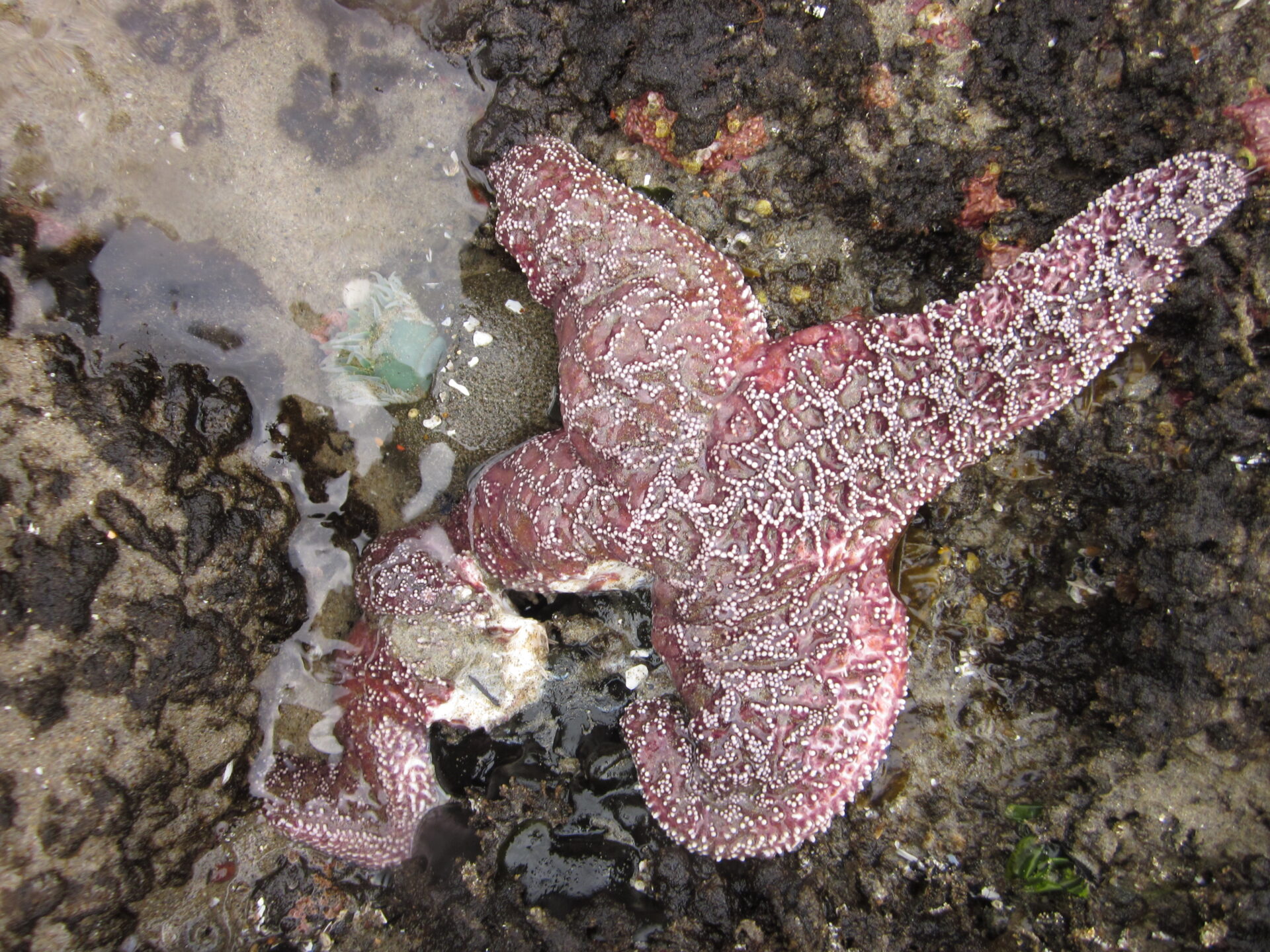Many of us are familiar with beaches, pilings and rock walls covered with a rainbow of sea stars (also called star fish). But during the last decade, more than 20 asteroid species or 90 percent of these keystone aquatic animals have died of wasting disease. It is named that because the sea stars quite literally waste away: the disease causes gaping lesions on the arms until they eventually fall off. Their demise shifts the ecological balance and causes a trophic cascade: sea stars eat mostly sea urchins who in turn eat kelp; the increase in sea urchins has led to a depletion of kelp forests that serve as incubators and safe havens for such marine species as abalone, limpets, anemones, barnacles and juvenile fish.
The disease spread at epidemic speeds and its range covered the Pacific shores from Mexico to Alaska. Scientists have been working to identity the pathogen that triggered this disease since early stages of the spread. Was it caused by toxins from algal blooms? Oxygen loss at sea? Was it some unknown virus? These questions led to concentrated research into various hypotheses as well sequencing the RNA of different microbes.
Fortunately, after a decade of work, there’s been a breakthrough: Dr. Alyssa Gehman, a disease ecologist with the University of British Columbia and the BC-based Hakai Institute, along with a group of other scientists, have discovered the cause: Vibrio pectenicida strain FHCF-3. It doesn’t exactly roll off the tongue, but it is described as a pathogenic bacterium that likes salt water. Gehman and the other researchers wrote in the journal Nature Ecology and Evolution that to decipher the cause, “they used the DNA of microbes that were in infected starfish, then compared them to healthy ones. They were able to find abnormally high levels of Vibrio pectenicida in the starfish’s coelomic fluid, which can be thought of as its blood.”
Knowing what causes a disease is a major step, but it’s not like COVID when there was an opportunity to quickly develop a vaccine. Thankfully, the disease has slowed and there are healthy colonies of sea stars. Now there is hope that enough of them have developed immunity to the microbe.
Jason Hodin, who works in a Friday Harbor Lab, is growing sea stars while also learning about their longevity. He and his colleagues suggest that a series of Pacific coast laboratories growing disease resistant sea stars could replenish the stock over time.
